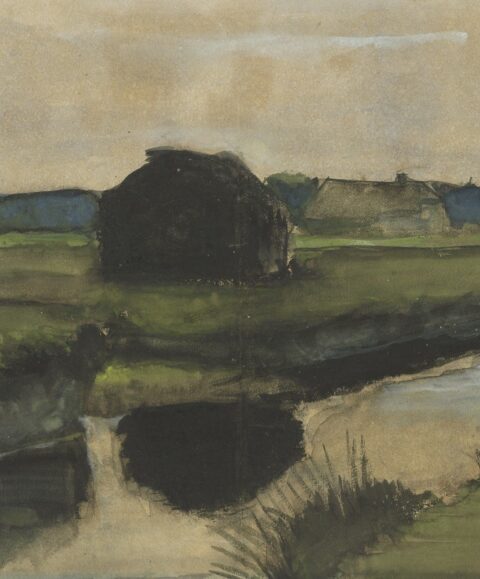
Travelling with Vincent – Van Gogh in Drenthe

- 11 September 2023 till 7 January 2024
- Drents Museum
In the exhibition Traveling with Vincent - Van Gogh in Drenthe, the visitor is introduced to perhaps the least known work by the world-famous painter Vincent van Gogh.
Follow Vincent van Gogh through Drenthe in 1883
From September 11, 2023 to January 7, 2024, paintings, drawings and watercolors that Van Gogh made during his stay in Drenthe, can be seen in Assen. It is unique that we are able to exhibit so many works of art from that time together. The Drenthe Van Goghs come from several museums and private collections all over the world. Art made by Vincent van Gogh prior to and following the Drenthe period can also be seen in this exhibition.
On Tuesday 11 September 1883 - exactly 140 years ago, this year - Vincent van Gogh (1853-1890) boarded the last train from The Hague to Drenthe. For about 3 months he stayed in Hoogeveen, Nieuw-Amsterdam/Veenoord and he also made a day trip to Zweeloo. The landscape in Drenthe inspires him. He finds peace and space to think about his artistry and to experiment. He practices with themes, techniques and colors. Van Gogh's time in Drenthe was very important for his development as an artist. He layed an important foundation for the many masterpieces that make him one of the most beloved artists ever.
Featured objects
-
![]()
Vincent van Gogh
Landscape with a farm -
![]()
Vincent van Gogh
Peasant burning weeds -
![]()
Vincent van Gogh
The peat barge
Van Gogh's mental and physical journey
In the exhibition Traveling with Vincent you follow Van Gogh's wanderings through Drenthe in 1883. Visitors board the train with Vincent, look at the landscape of Drenthe through his eyes and meet the contemporaries and sources of inspiration that were important to him during his stay in Drenthe, such as Jacob van Ruisdael, Jean-Francois Millet and Anton Mauve.
'Drenthe is superbe'
The artworks of Van Gogh, his contemporaries and his sources of inspiration are presented in various areas that are inspired by the colors in the Drenthe landscape as Vincent describes them in letters to his brother Theo, designed by NorthernLight. Van Gogh's Drenthe oeuvre shows the beauty he finds in the hard work of farmers and peat workers and the landscapes with huts, peat fields and kilometers of waterways.

Sprouting in the soil of Drenthe
Over the past eight years we have conducted extensive research into Vincent van Gogh's Drenthe period.In this book, Annemiek Rens delves into what for decades has been the least known chapter in Vincent van Gogh's well-known life story; the Drenthe period. The book also includes an essay by Jan van Zijverden (Drents Museum) and Mark Goslinga (Drents Archive) where the Drenthe of 1883 is discussed. The book costs € 29.95 (Wanders Uitgevers) and will be available from September 11 in the museum shop.









